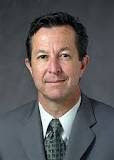NASA astronaut Tom Marshburn assists Canadian Space Agency astronaut Chris Hadfield, with an Ultrasound 2 scan in the Columbus Module of the International Space Station. Credit: NASA
Fast, efficient and readily available medical attention is key to survival in a health emergency.
When a person is stricken with injury or illness, getting a quick and accurate diagnosis through medical imaging technology can be crucial for ensuring proper treatment. NASA
For people who live in major cities and towns where fully-equipped hospitals are only a quick ambulance ride away, that's not usually a problem. But for those without medical facilities within easy reach, it can mean the difference between life and death.
For astronauts in orbit about 240 miles above Earth aboard the International Space Station, that problem was addressed through the Advanced Diagnostic Ultrasound in Microgravity (ADUM) investigation.
Station crew members trained to use a small ultrasound unit aboard the station to examine fellow crewmates.
In the event of a health concern, astronauts could use this facility to diagnose many injuries and illnesses with the help of doctors on Earth.
Last year, the ultrasound unit used for ADUM was replaced with a smaller and even more sophisticated scanner dubbed Ultrasound 2, currently in use aboard the orbiting laboratory.
Now those same techniques are being adapted and used for people living in remote, underdeveloped areas far from any hospital, where CT scans, MRIs and even simple X-ray exams are impossible.
In partnership with the World Interactive Network Focused on Critical Ultrasound (WINFOCUS), ADUM principal investigator Dr. Scott Dulchavsky is taking techniques originally developed for space station astronauts and adapting them for use in Earth's farthest corners.
"The ADUM experiment developed protocols for performing complex procedures rapidly with remote expert guidance," said Dulchavsky.
"The procedure was streamed live to allow doctors to request adjustments to the exam real-time.
We did about 80 hours of ultrasound exams on the space station, and it worked pretty famously. After some modification of the process, we got a pretty slick product."
This is a view of the screen during a tele-ultrasound guidance session performed by a WINFOCUS doctor in Italy to a team in rural Brazil. Credit: WINFOCUS
Although the experiment worked on the space station, Dulchavsky was looking to further the reach of this valuable tool.
"I'm a doctor on Earth way more than I'm a space medicine doctor, so I was trying to figure out how we could transition this work to care for people on the planet, particularly in remote, austere, underserved environments," Dulchavsky explained.
He already had adapted ADUM protocols for Earth-bound use by non-medical professionals, such as athletic trainers of several pro sports teams and Olympic athletes, but he knew that much more was possible. Enter WINFOCUS.
"Ninety-five percent of the population doesn't have quick access to some of the most common diagnostic tools doctors use," said Dulchavsky.
"WINFOCUS is a global network organization, and their main goal is to use ultrasound as an enabling point-of-care device."
Fast, efficient and readily available medical attention is key to survival in a health emergency.
When a person is stricken with injury or illness, getting a quick and accurate diagnosis through medical imaging technology can be crucial for ensuring proper treatment. NASA
For people who live in major cities and towns where fully-equipped hospitals are only a quick ambulance ride away, that's not usually a problem. But for those without medical facilities within easy reach, it can mean the difference between life and death.
For astronauts in orbit about 240 miles above Earth aboard the International Space Station, that problem was addressed through the Advanced Diagnostic Ultrasound in Microgravity (ADUM) investigation.
Station crew members trained to use a small ultrasound unit aboard the station to examine fellow crewmates.
In the event of a health concern, astronauts could use this facility to diagnose many injuries and illnesses with the help of doctors on Earth.
Last year, the ultrasound unit used for ADUM was replaced with a smaller and even more sophisticated scanner dubbed Ultrasound 2, currently in use aboard the orbiting laboratory.
Now those same techniques are being adapted and used for people living in remote, underdeveloped areas far from any hospital, where CT scans, MRIs and even simple X-ray exams are impossible.
 |
| Scott Dulchavsky |
"The ADUM experiment developed protocols for performing complex procedures rapidly with remote expert guidance," said Dulchavsky.
"The procedure was streamed live to allow doctors to request adjustments to the exam real-time.
We did about 80 hours of ultrasound exams on the space station, and it worked pretty famously. After some modification of the process, we got a pretty slick product."
This is a view of the screen during a tele-ultrasound guidance session performed by a WINFOCUS doctor in Italy to a team in rural Brazil. Credit: WINFOCUS
Although the experiment worked on the space station, Dulchavsky was looking to further the reach of this valuable tool.
"I'm a doctor on Earth way more than I'm a space medicine doctor, so I was trying to figure out how we could transition this work to care for people on the planet, particularly in remote, austere, underserved environments," Dulchavsky explained.
He already had adapted ADUM protocols for Earth-bound use by non-medical professionals, such as athletic trainers of several pro sports teams and Olympic athletes, but he knew that much more was possible. Enter WINFOCUS.
"Ninety-five percent of the population doesn't have quick access to some of the most common diagnostic tools doctors use," said Dulchavsky.
"WINFOCUS is a global network organization, and their main goal is to use ultrasound as an enabling point-of-care device."








No comments:
Post a Comment